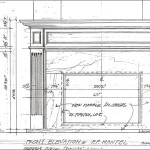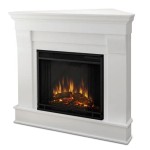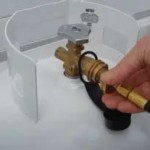Understanding Skytech Fireplace Remote Controls
Skytech fireplace remote controls provide a convenient and efficient method for managing gas fireplaces. These devices offer users the ability to adjust flame height, ignite the pilot light, and even control auxiliary features like blower fans, all from a distance. Understanding the functionality, maintenance, and troubleshooting of Skytech remotes is crucial for maximizing their benefits and ensuring consistent performance from your gas fireplace.
The primary function of a Skytech remote is to remotely control the operation of a gas fireplace. Traditional gas fireplaces often require manual operation, involving bending down and adjusting knobs or levers. A Skytech remote eliminates this need, allowing users to control the fireplace from the comfort of their seating area. This added convenience is particularly beneficial for individuals with mobility issues or those who simply prefer a more modern and user-friendly experience.
Skytech remotes often utilize radio frequency (RF) technology. RF signals offer a wider range and are less susceptible to interference compared to infrared (IR) remotes. This means that the remote can communicate with the fireplace receiver even if it's not in direct line of sight. This is a significant advantage compared to older remote technologies that required a clear, unobstructed path between the remote and the receiver.
Modern Skytech remotes can incorporate a variety of advanced features. These might include programmable timers, thermostat functions, and child safety lockouts. Programmable timers allow users to set specific on and off times for the fireplace, optimizing energy consumption and ensuring the room is warm when needed. Thermostat functions enable the remote to maintain a consistent room temperature by automatically adjusting the flame height. Child safety lockouts prevent unintended operation of the fireplace, providing an added layer of security.
Key Benefits of Using a Skytech Fireplace Remote Control
The advantages of using a Skytech fireplace remote extend beyond mere convenience. These remotes offer enhanced control, improved safety, and potential energy savings. By understanding these key benefits, users can better appreciate the value that a Skytech remote brings to their home.
The first major benefit is ease of use. Instead of manually adjusting the fireplace, users can use the remote from anywhere in the room. This is particularly useful for people with mobility issues or those who simply want to avoid the hassle of bending down to reach the controls.
Another important benefit is the increased control over the fireplace's settings. Many Skytech remotes have features such as flame height adjustment, thermostat control, and timer settings. This allows users to fine-tune the fireplace's operation to their specific preferences and needs.
Safety features are another significant advantage. Some remotes include child lock settings to prevent accidental operation by children. The remote also allows users to turn off the fireplace quickly in case of an emergency, without needing to physically access the controls.
Finally, Skytech remotes can contribute to energy savings. The timer and thermostat functions help to optimize the fireplace's energy usage. Users can set the fireplace to turn off automatically after a set period of time or maintain a specific room temperature, which prevents the fireplace from running unnecessarily and wasting energy.
Understanding the Components of a Skytech Fireplace Remote System
A Skytech fireplace remote system consists of several key components that work together to control the fireplace. These components include the remote transmitter, the receiver unit, and the wiring that connects the receiver to the gas valve and other fireplace components. Understanding the role of each component is essential for proper installation, maintenance, and troubleshooting.
The remote transmitter is the handheld device that users interact with to control the fireplace. It typically features buttons or a touchscreen that allows users to adjust the flame height, turn the fireplace on or off, and access other features. The transmitter is powered by batteries and transmits signals to the receiver unit via radio frequency.
The receiver unit is typically located within the fireplace or in a nearby compartment. It receives signals from the remote transmitter and controls the gas valve and other components of the fireplace. The receiver is powered by electricity and is connected to the gas valve, pilot light, and other components via wiring.
The wiring is a crucial part of the system. It connects the receiver unit to the gas valve, pilot light, and other components of the fireplace. The wiring must be properly installed and maintained to ensure that the system functions correctly. It's important to consult the manufacturer's instructions when installing or troubleshooting the wiring.
Some systems might also include a thermopile or thermocouple. This device generates a small electrical current from the heat of the pilot light, which is used to power the gas valve. The thermopile or thermocouple is an important safety feature, as it ensures that the gas valve will only open when the pilot light is lit.
The gas valve is responsible for controlling the flow of gas to the fireplace. It is operated by the receiver unit, which receives signals from the remote transmitter. The gas valve is a critical safety component, as it prevents gas from leaking into the fireplace when it is not in use.
Troubleshooting Common Issues with Skytech Fireplace Remotes
While Skytech remotes are generally reliable, users may encounter occasional issues that require troubleshooting. Common problems include unresponsive remotes, flickering flames, and pilot light failures. Addressing these issues promptly can prevent further damage and ensure the continued safe operation of the fireplace.
One common issue is an unresponsive remote. This can be caused by several factors, including dead batteries, interference from other electronic devices, or a malfunctioning receiver unit. The first step in troubleshooting an unresponsive remote is to replace the batteries with fresh ones. If this doesn't resolve the issue, try moving away from other electronic devices that may be causing interference. If the remote still doesn't work, the receiver unit may be malfunctioning and require repair or replacement.
Another common issue is flickering flames. This can be caused by a dirty pilot light, a low gas pressure, or a malfunctioning gas valve. The first step in troubleshooting flickering flames is to clean the pilot light with a small brush or vacuum cleaner. If this doesn't resolve the issue, check the gas pressure to ensure that it is within the recommended range. If the gas pressure is low, contact a qualified gas technician to inspect the gas supply. If the pilot light is clean and the gas pressure is adequate, the gas valve may be malfunctioning and require repair or replacement.
Pilot light failures are another common issue. This can be caused by a dirty pilot light, a malfunctioning thermocouple or thermopile, or a low gas pressure. The first step in troubleshooting pilot light failures is to clean the pilot light with a small brush or vacuum cleaner. If this doesn't resolve the issue, check the thermocouple or thermopile to ensure that it is functioning correctly. If the thermocouple or thermopile is malfunctioning, it may need to be replaced. If the pilot light is clean and the thermocouple or thermopile is functioning correctly, check the gas pressure to ensure that it is within the recommended range. If the gas pressure is low, contact a qualified gas technician to inspect the gas supply.
It's important to consult the Skytech remote's user manual for specific troubleshooting instructions and safety precautions. If you are not comfortable troubleshooting the remote yourself, contact a qualified fireplace technician for assistance.
Regular maintenance is also crucial for preventing problems. Clean the remote and receiver regularly to remove dust and debris. Inspect the wiring for any signs of damage or wear. Replace batteries in the remote as needed. Schedule annual inspections of the fireplace by a qualified technician to ensure that all components are functioning correctly and safely.
By understanding the components of a Skytech fireplace remote system, recognizing common issues, and following proper troubleshooting steps, users can ensure the long-lasting and reliable performance of their fireplace.

Skytech 1001th Thermostat Fireplace Remote Control

Skytech 1420t Lcd Timer Fireplace Remote Control

Skytech 3301 Timer Thermostat Fireplace Remote Control

Skytech 1001t Lcd Transmitter Remote Only

Discontinued Skytech 1401 Fireplace Remote Control Replaced By Sky 1420 A

Skytech Remote Control System Lcd Display Thermostatic Transmitter Battery Powered Solenoid And Receiver

Skytech 1001a On Off Fireplace Remote Control Casual Furniture World

Skytech Con Th Transmitter Remote Only

Fireplace Remote Replacement For Skytech 1001th A And Procom

Skytech Con Transmitter Remote Only
Related Posts








